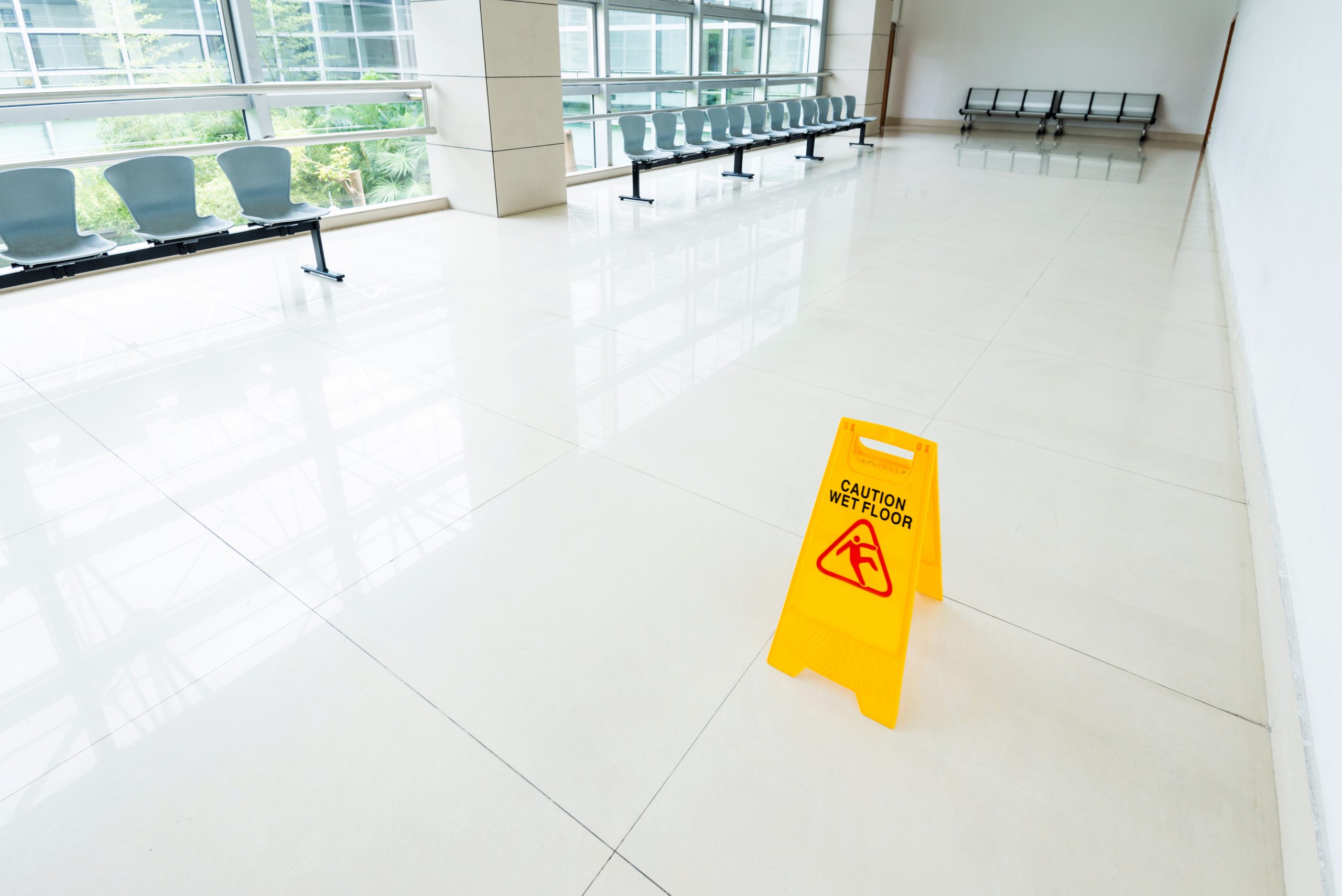
1. What is a dangerous condition on public property?
When most people consider “dangerous conditions on public property,” they typically think of outdoor hazards. From uneven sidewalks to potholes in the road, hazardous situations on public property frequently cause injuries to pedestrians, bicyclists, and motorists.
Hazards indoors, however, can also give rise to dangerous conditions. Faulty flooring or broken railings can also create hazards that injure members of the public who are using public buildings and facilities.
Practically, any condition on public property that causes an injury can amount to a dangerous condition. Thus, even a public entity that tries in good faith to keep up with maintaining public facilities, could face limitless liability. As a result, the California legislature and courts have created a complicated legal structure for holding public entities liable for injuries caused by dangerous conditions on public property.[1]
2. What is the legal definition of a “dangerous condition” on public property?
The California Government Code defines “dangerous condition” to mean “a condition of property that creates a substantial . . . risk of injury when such property . . . is used with due care in a manner in which it is reasonably foreseeable that it will be used.”[2] In other words, a dangerous condition is a condition that makes property dangerous in a foreseeable way.
A dangerous condition might include, for example, a tile floor in a public building that gets very slippery when wet. It is reasonably foreseeable that even someone walking across the floor “with due care” might fall and seriously injure themselves.
The flip side to that coin is that a condition will not be considered “dangerous” if it is only hazardous when “misused.” That is, a public entity is not responsible if the condition becomes dangerous only when misused. In one case, for example, the court found a public fence was not “dangerous” where a child was injured by using his bicycle as a ladder to climb over the fence because such a use of the fence was not reasonably foreseeable.[3]
Further, a minor, trivial, and insignificant risk does not rise to the level of a “dangerous condition.” In fact, a judge could determine—before a case ever gets to a jury—that the risk caused by a supposedly dangerous condition “was of such a minor, trivial or insignificant nature in view of the surrounding circumstances that no reasonable person would conclude that the condition created a substantial risk of injury when such property . . . was used with due care . . . .”[4]
It is important to keep in mind there is no clearcut rule for what constitutes a dangerous condition; each case depends on its facts.[5] A traffic expert, for example, might be required to determine whether a particular intersection or freeway ramp was in a dangerous condition and, if so, whether the dangerous condition caused someone to suffer injuries. This may require a public-records request for design history, improvements/modifications, complaint history, and/or accident history. Of course, the absence of previous accidents does not necessarily end the question of whether a condition is dangerous.[6]
An experienced dangerous-conditions attorney, like those at Singleton Schreiber, would be happy to consult with you on whether a particular condition on public property might be considered “dangerous” under the law.
3. Can you sue a city, county, or state for injuries caused by a dangerous condition?
Public entities and employees may only be held liable for dangerous conditions pursuant to the legal structure created by the California legislature and courts. Another way to think about this is through the lens of immunities. That is, public entities and employees are immune from liability for injuries caused by dangerous conditions—except as specifically provided by law.
You cannot, for example, sue public entities or employees for dangerous conditions on “easements, encroachments and other property that are located on the property of the public entity but are not owned or controlled by the public entity.”[7] The issue of “control” is discussed in more detail below.
Similarly, seismic/earthquake safety and fire-sprinkler improvements, financed with public funds, are not considered “public property” under the dangerous-conditions legal scheme.[8]
In the same vein, a condition will not be considered “dangerous” under this legal scheme “merely because of the failure to provide regulatory traffic control signals, stop signs, yield right-of-way signs, or speed restriction signs . . . or distinctive roadway markings.”[9]
There are, in fact, several specific circumstances where liability for dangerous conditions is either limited or entirely excluded, including:
- Injuries caused by a construction plan/design that has been pre-approved by the public entity;
- Injuries caused by emergency responders controlling traffic signals;
- Injuries caused by weather conditions on public roads;
- Injuries caused by natural condition of unimproved property;
- Injuries caused by conditions at public beaches;
- Injuries caused by certain road repairs;
- Injuries caused by unpaved roads/trails;
- Injuries caused by hazardous recreational activities on public property (e.g., surfing, kayaking, horseback riding, mountain biking, and rock climbing);
- Injuries caused at dog parks;
- Injuries caused by conditions at reservoirs.[10]
It is also important to consider it can be more difficult than expected to determine the identity of the public entity responsible for a dangerous property. Incident reports, and even expert opinions, may be required to determine which public entity owned and/or controlled a dangerous property.
4. Can you sue a public employee for injuries caused by a dangerous condition?
It is possible to sue a public employee for injuries caused by a dangerous condition, but it can be difficult. Generally, “a public employee is not liable for injury caused by a condition of public property where such condition exists because of any act or omission . . . within the scope of [their] employment.”[11]
That said, there are certain situations where a public employee may be held liable for injuries caused by a dangerous condition created by that employee—namely where the employee had the authority and the funds “immediately available to take alternative action which would not have created the dangerous condition.”[12]
5. Are there certain requirements to sue a public entity or employee for injuries caused by dangerous conditions?
Yes, before filing a lawsuit against a public entity or employee for damages (i.e., for monetary compensation) for injuries caused by a dangerous condition, there are certain prerequisites.
One of these requirements is to submit a “tort claim” to the public entity responsible for (or whose employee is responsible for) the dangerous condition that caused the injuries.[13] One purpose of this requirement is to ensure the public entity is notified of the claim within a reasonable time, allowing it to investigate the claim, preserve relevant evidence, and potentially resolve the claim before a lawsuit is filed. It is rare, however, for a public entity to accept and pay a pre-lawsuit claim.
In general, a claim for damages must be submitted to the public entity within six months from the date the claim arose (or, in legal speak, “six months after the accrual of the cause of action”).[14]
If the claim is rejected, a new six-month clock starts for the injured party to file a lawsuit in court. That is, a rejection of the tort claim triggers a six-month deadline to file any lawsuit against the public entity and/or employee(s) in court.[15]
6. How do you win a lawsuit against a public entity or public employee for damages caused by a dangerous condition?
For someone who has been injured by a dangerous condition to win a lawsuit against a public entity, they must prove all of the following:
- That the public entity owned or controlled the property;
- That the property was in a dangerous condition at the time of the injury;
- That the dangerous condition created a reasonably foreseeable risk of the kind of injury that occurred;
- That the negligent or wrongful conduct of a public employee created the dangerous condition – or – that the public entity had notice of the dangerous condition for a long enough time to have protected against it;
- That the plaintiff was harmed; and
- That the dangerous condition was a substantial factor in causing the plaintiff’s harm.[16]
Showing the public entity had “control” of the dangerous property is key. This is because public entities are often responsible for properties they might not actually own. A city, for example, might exert control over a railroad crossing it does not actually own, thus making the city potentially liable for dangerous conditions at the crossing.
Juries are instructed that, in deciding whether a public entity had control over a property, they are to “consider whether it had the power to prevent, fix, or guard against the dangerous condition,” and whether it “treated the property as if it were its
property.”[17]
Determining which public entity had control over a dangerous property can be complicated and may require an in-depth analysis of property and ownership records. This is where an attorney experienced in dangerous-conditions lawsuits can be of great help. If you are not certain which public entity might be responsible for injuries caused by a dangerous condition on public property, the experienced lawyers at Singleton Schreiber would be happy to consult with you.
7. Do you need an attorney to get compensation for injuries caused by dangerous conditions in public places?
The legal structure for suing public entities and employees for injuries caused by dangerous conditions is thorny. It includes numerous limitations, exclusions, prerequisites, and deadlines, making it intimidating even to many lawyers.
While an attorney is not required for someone to seek compensation for injuries caused by dangerous conditions in public places, an attorney experienced in dangerous-conditions lawsuits can make a world of difference. If you have questions or concerns about a potential lawsuit for injuries caused by a dangerous condition on public property, we invite you to contact one of the experienced attorneys at Singleton Schreiber for a free consultation.
Author: Brett Schreiber (Partner)

[1] See Cal. Gov’t Code §§ 830 et seq.
[2] Cal. Gov’t Code § 830(a).
[3] Biscotti v. Yuba City Unif. Sch. Dist., 158 Cal. App. 4th 554 (2007).
[4] Cal. Gov’t Code § 830.2; see also Stathoulis v. City of Montebello, 164 Cal. App. 4th 559, 567-68 (2008).
[5] Fackrell v. City of San Diego, 26 Cal. 2d 196, 206 (1945).
[6] See Lane v. City of Sacramento, 183 Cal. App. 4th 1337, 1346 (2010).
[7] Cal. Gov’t Code § 830(c).
[8] Cal. Gov’t Code § 830.1.
[9] Cal. Gov’t Code §§ 830.4, 830.8.
[10] Cal. Gov’t Code §§ 830.6-831.8.
[11] Cal. Gov’t Code § 840.
[12] Cal. Gov’t Code § 840.2.
[13] Cal. Gov’t Code §§ 900 et seq.
[14] Cal. Gov’t Code § 911.2(a).
[15] Cal. Gov’t Code § 945.6.
[16] CACI No. 1100; Cal. Gov’t Code § 835.
[17] CACI No. 1101; Cal. Gov’t Code § 830(c).
